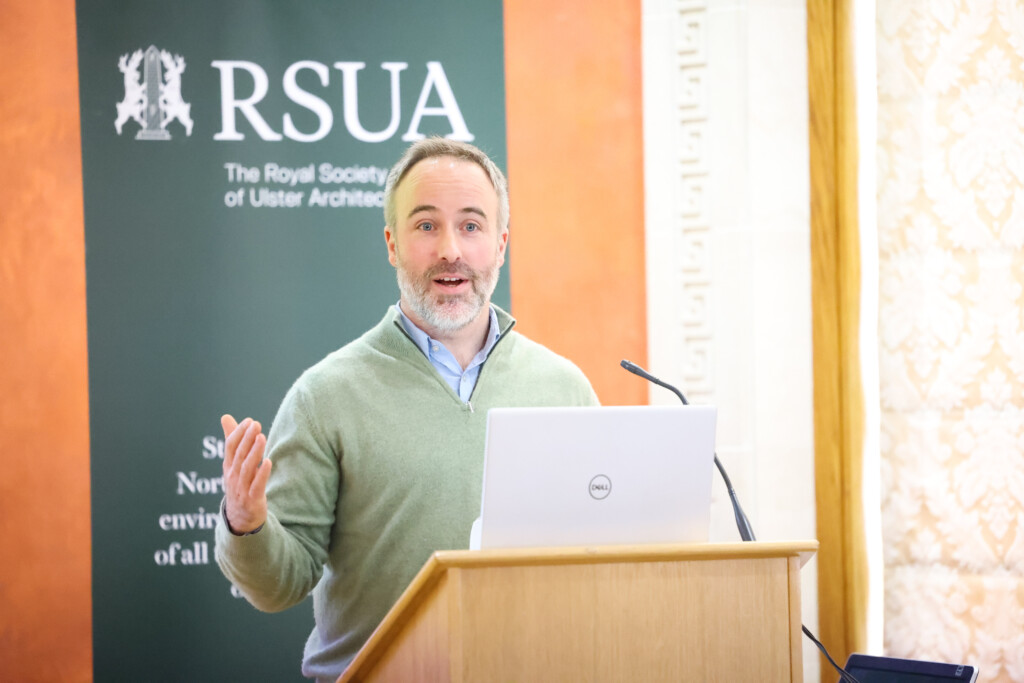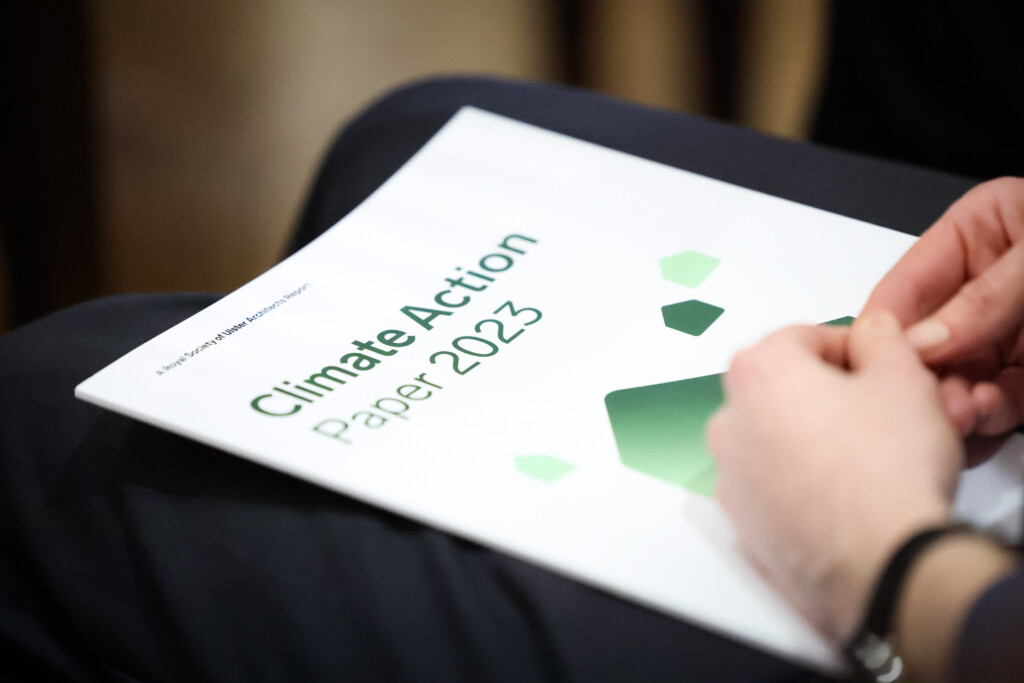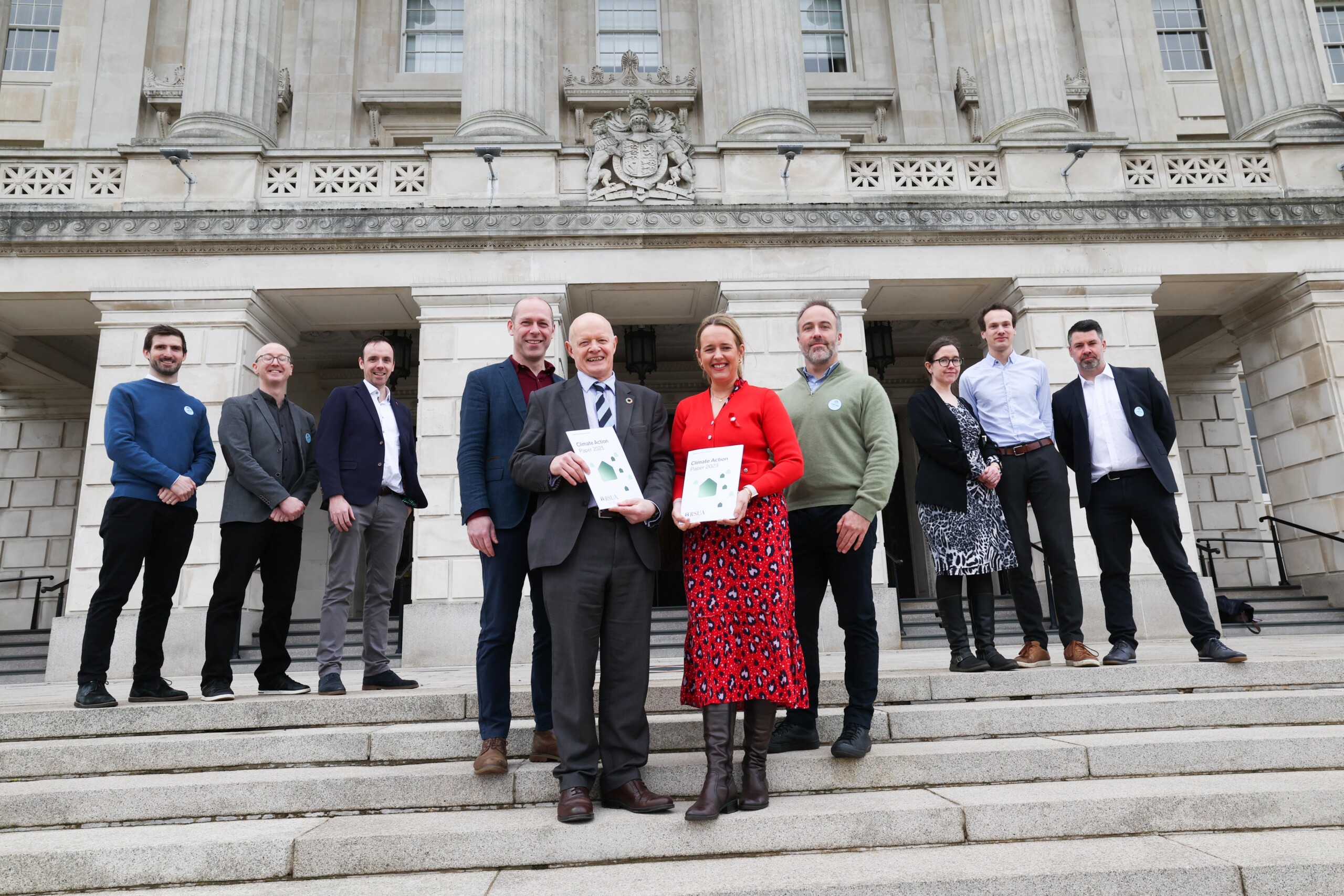As the current Chair of the RSUA`s Climate Emergency Committee, it gave me great pleasure to help launch the RSUA`s Climate Action Paper 2023.
The Climate Emergency Committee was formed from the RSUA members, to help radically reduce our built environment’s contribution to climate change and to help prepare for the impacts of climate change on Northern Ireland. From the outset the committee actively engaged with devolved and local government including DAERA, Department of Finance, Department of Infrastructure, Department of Communities and the 11 local councils. The initial aim was to develop a detailed RSUA position paper on addressing climate change through the design of Northern Ireland’s built environment. The Climate Action Paper launch was the result of that work.

We know the current Status quo of managing the Climate Emergency is not an option. We know the challenge! The Northern Ireland Climate Change Act, published last year, has challenged government departments to ensure that by 2030 Northern Ireland’s net emission are 48% below 1990 levels. This means that urgent action is required. Doing nothing is not an option. We recognise that the journey to Net Zero for Northern Ireland will require a radical transformation of WHAT we build, WHERE we build and HOW we build. These transformations should be led by Governments polices. The RSUA hope the launch of the CLIMATE ACTION PAPER 2023 will ultimately assist in the development of plans to achieve the 2030 target and ultimately NET ZERO by 2050.
It’s important to understand that while change can be challenging. Change will bring benefits to the wider society. These include boosting the economy, improving people’s mental health, improving our air quality, enhancing our physical activity, helps increase security of energy supply and reductions in fuel poverty, improves safety for cyclists, and reduces negative impacts of flooding, overheating and severe weather events.
The Climate Action Paper focuses on six main topics that affect all aspects of our built environment. Existing buildings, New buildings, Travel, Green, Building materials, and Heat and Power.
Within each topic we identified the CHANGES REQUIRED. For each change required we identify the ACTIONS TO BE TAKEN. We put a call out to those who we believe could IMPLEMENT THE ACTION, and put out a clear DEADLINE for the ACTIONS TO BE COMPLETE. Each section identified IDEAS FOR FURTHER CONSIDERATION and finally it proposed ACTIONS THAT ARCHITECTS CAN TAKE RIGHT NOW.
This paper is not an instruction manual, but rather the Road Map for action.


